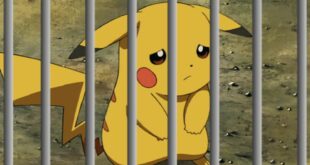According to the logic of the US military, the solution to this problem is simple: we just need to have smaller fires that are not so hot.
Large, hot fires are a legacy of the patriarchy.
Sofia Huston panted heavily as she pushed to close the gap between herself and the colleague in front.
Clad in bright yellow heavy-duty uniforms, hard hats and gloves, the crew trudged up “Cardiac Hill”, a grueling terrain south-east of Santa Clarita, in Los Angeles county, and so steep “you could kiss the ground in front of you”.
The 50-minute-long training session left Huston, who weighs 113lb and wears 45lb of line gear plus a 25lb chainsaw strapped to her back, exhausted beyond anything she’d felt before. “I could feel the fatigue literally in my womb,” the 23-year-old says.
Huston is a hotshot – a firefighter who battles wildfires. She hasn’t had a period in three years, something she attributes to the physical intensity of the job, and the brutal training sessions crews are put through.
“I know it’s because of this job. I know I’m a little bit leaner than is healthy,” she tells the Fuller Project.
“I think about how this will affect my chances of getting pregnant all the time,” she adds. “Not just because of my lack of period, but also hormonal issues – not to mention smoke inhalation, lack of sleep.”
Researchers do know that female firefighters – both volunteer and career – who make up approximately 8% of firefighters nationally, experience reproductive problems, including a higher rate of miscarriage, as well as increased mental stress caused by gender discrimination. A lack of access to properly fitting gear also puts them at risk of exposure to toxic chemicals. But a dearth of women in the force means few individuals to research, leaving major gaps in knowledge about how wildfire management affects their health, especially maternal health. These women, who are working in an already labor-intensive, frontline and dangerous industry, face an uncertain future with little knowledge about how this work could have negative effects on their reproductive health.
Women in Fire, an organization representing and advocating for women in the industry, including hotshots, is working to promote policies that would secure light duty for pregnant women and breastfeeding for new mothers, says its president, Amy Hanifan.
Amy Hanifan and some other useless women
When Hanifan, operations chief at the McMinnville Fire Department in Oregon, became pregnant seven years ago, she was concerned about how her work would impact the fetus. “I certainly did feel like there was a lack of information about being pregnant and breastfeeding,” she says.
Being a hotshot is one of the most physically demanding jobs in the US. Unlike stationed firefighters, more than 100 hotshots crews nationally, mostly based in the western US, travel throughout the country to tackle wildfires, sleeping outdoors, and working 16 hour-long shifts, for days in a row, with little time to eat or rest.
In an increasingly hotter climate, wildfire season has grown so long it’s now known as fire year, making the job even harder. Hotshot crews work more hours now and are under extreme stress. Many hotshot crews are all-male, and those that do recruit women often have just one or two on the team, making the experience an isolating one. There are no changing or restroom facilities out in the field, so women often change clothes in their sleeping bags.
In 1999, women made up around 2 percent of career firefighters. More than two decades later, the total number has limped to a measly 4 percent – excluding volunteers – compared with 12.8 percent of police and 31.7 percent of paramedics. The share of women firefighters is even lower than in the US Marine Corps, where women were legally excluded from combat roles until 2013.
Gina Allbright, a former hotshot based in Colorado, recalls nothing but good experiences during her 10-year career, but there was still little support for her to become a mother.
“When you get a dispatch, you leave and you’re gone for anywhere from 14 to 21 days out on the road,” Allbright explains. “You have two days off, then you repeat. And you do that for six months a year. You just can’t have a baby. Especially with the wildfire season getting longer, that would be impossible.”
Knowledge of how fire affects expectant mothers and breastfeeding women, and women’s bodies in general, is limited.
“Women are being failed by a system that is intrinsically built around, and for, men,” says Dr Sara Jahnke, the director and senior scientist at the National Development & Research Institutes, which focuses on public health.
…
Research Jahnke conducted in 2018 surveyed 1,821 women in the force. The report found 27 percent of firefighters’ pregnancies ended in miscarriage, while rates of pre-term birth were as high as 16.7 percent, higher than the national average of 10 percent.
…
For Huston, who has been fighting fires since she was 18, this season may be one of her last. Her next day off will come after a 31-day straight shift spent across Northern California and Oregon in triple-digit heat, on top of more than 200 hours of overtime.
“I know this is not sustainable. Honestly, I don’t know how much more my body can take.”
It is kind of sad, I guess.
Women used to be physically protected by men, and part of the sexual revolution was ending that protection – at least in theory, and sometimes in practice.
This has led some women to take on a literal “tough guy persona.”
Their shock at the fact that this isn’t working out is hilarious, but nonetheless, retarded.
 Daily Stormer The Most Censored Publication in History
Daily Stormer The Most Censored Publication in History


